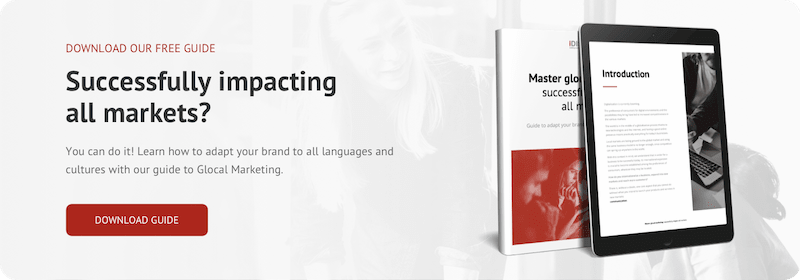We all know how complex it can be to get a good organic search positioning. This becomes even more complicated for multilingual websites, i.e., a website translated into several languages.
To reach our target audience we must work on the positioning of our website. Good SEO positioning means our website will be one of the top results on search engines, which will generate more opportunities to be found by consumers.
But what exactly is SEO, and how do you improve the positioning of a multilingual website?
To answer this, we will first go a little more in depth about what mechanics are behind how Search Engine Optimization (SEO)works.
SEO positioning is the act of persuading search engines to recommend your website over others and then get your page seen by a greater number of users. The relevance of your website to search engines is as important as the quality of the content you offer to users. Without quality content there is no relevance, and conversely, without relevance, quality content remains invisible.
When it comes to getting the best SEO for a multilingual website, there are different strategies than if it were a monolingual website. Just like how we need to adapt our language to our target audience when communicating, SEO positioning also involves some aspects that need to be adapted.
Do you know how to set an international SEO strategy for your multilingual website?
Don’t miss out! Read on to learn all about it.
1. Research the target market and your competition
Before you start, the first and most important thing is to make sure that your business can work in the new markets you want to enter. We know that expanding into other countries often leads to business growth; however, if your business model is not well received, does expansion make sense?
To use a more colloquial expression, we could ask ourselves, “can you sell ice to an Eskimo?"
As you know, we need to consider more than just language when expanding a company into new markets . Knowing the culture of the target society is essential to adequately adapt our offering to the target. What may be a wonderful idea in France may be terribly received in Germany. To make sure that you will actually succeed, it is essential you study the target market, your local competition, the target society, etc.
2. Define the buyer persona of your multilingual website
The second step is vital: defining your buyer persona.
In other words, who is your product or service aimed at?
What is a buyer persona?
Your buyer persona is a definition of your ideal customer. Creating a buyer persona is a very useful exercise that will allow you to specify the profile of your target customer in order to better identify their needs and then adapt your sales strategy more precisely.
It is not unusual for the same company to target different buyer personas. Your product or service can serve to satisfy different needs of different sections of your audience, so it is important to consider the different profiles in order to target each one of them correctly.
This becomes even more important if we take into account your buyer persona or personas in the new target markets.
Changing languages leads to some cultural change and the profile of your ideal customer in your source market does not necessarily match that of the target market.
You will need to research the new market, and your potential consumers and their behavior, to create a realistic buyer persona profile and adapt your multilingual content strategy.
3. Create specific content for your multilingual website
Following on from the previous point, we pose the following question:
Is it effective to offer the same content to different buyer personas?
As we saw before, making the right impact on your target audience comes from offering them personalized and adapted content. If your website is multilingual, making your content unique for each market will more effectively capture the interest of that audience.
The content of a website is much more than the words on the pages. All the elements that make up its structure must be valued and adapted to the audience that will go to it.
You will have to take into account the preferences of your users in each target market. If there is one thing we can take away from all this, it is that a literal translation of your website will not be enough to meet your goals. Your translation will have to fit into that socio-cultural environment.
And this is what a multilingual website allows you to do.
4. Pay attention to SEO translation
When we talk about boosting a multilingual website’s SEO positioning, we are referring to a central and must-do step: SEO translation.
Our article “International SEO: the most common mistakes when positioning your website in other countries” already outlined the main mistakes made when working with a multilingual website.
As we mentioned at the beginning of the article, SEO is our main tool to position websites in target markets, since it helps win over search engines and beat competitors.
In order for our website’s and blog’s translations to be in the same position as our website’s original content, we need to keep an eye on how we translate anything related to SEO.
This includes several areas requiring our attention:
- Translate your content in a reader-friendly way: translating your website using machine translation plugins can make content come off as stilted and hard to understand. You need to consider the content and complexity of your copy, as this will determine the most appropriate translation method and tools for your project.
- Select the keywords that your market’s target customers search for online and do not just go for a literal translation of the original words. A keyword in the source language may have more than one translation in the target language. The opposite can also happen, where we have various source language words and one translation for all of them.
- Translate text metadata: this includes keywords, titles, meta descriptions, URLs, alternative image texts, etc. All these not so visible data are very influential for SEO, and not translating them properly will seriously handicap your multilingual website’s positioning.
- Adapt your interlinking strategy to pages in different languages: internal links must be replaced by translated links from your website, as well as external links, which have to be changed to point to domains in the same language.
- Generate sitemaps properly: a sitemap is an index for helping search engines understand how the website is distributed and the relationship between the different internal pages within the same domain. This code must be generated correctly from the translated content, and here it is important to have a good translation for your website. It is important for search engines to give more relevance to your website based on the geographic region in which searches are performed.
5. Hire an agency specialized in SEO translation
If you’ve made it this far, you probably have a lot of questions running through your head right now.
SEO translation? Metadata? Sitemap translation? Buyer persona?
You may know these terms, or have an idea about most of them, but how do we apply all this in a simple way to boost the positioning of a multilingual website?
We already clearly understand that just translating a website literally is not enough.
That’s true. SEO is the basis of any digital marketing strategy and it needs to be carried over and adapted to each language to ensure that our multilingual website attracts and converts the right customers.
For this reason, the best option will always be to rely on professional experts who can understand and adapt your strategy according to the size or complexity of your project.
In short, don’t underestimate the power of properly localizing your website. Follow these 5 key strategies to boost your positioning and leave it to an SEO-focused agency to both translate and fit your strategy’s requirements.
If you still have any questions, don’t forget to visit our blog. There you will find all the information you need and more.
You can also get in touch with us. We would be happy to help you!




